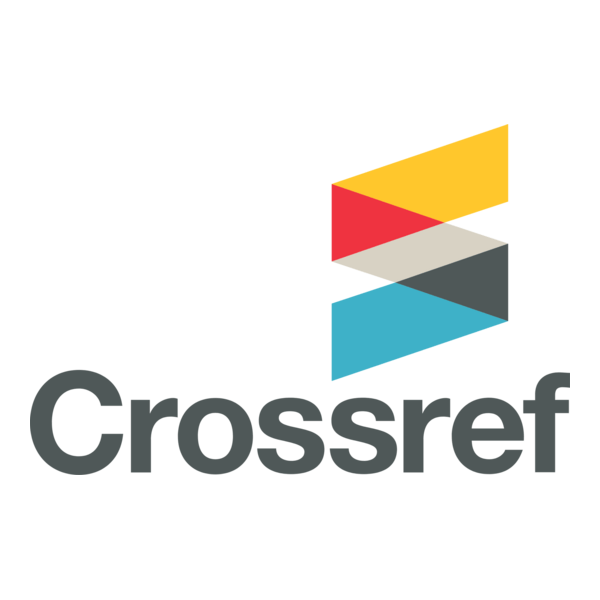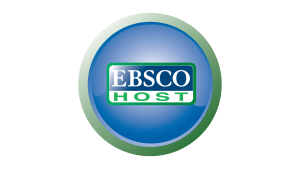Management Challenges and Factors Determining Their Successful Solution
DOI:
https://doi.org/10.37886/ip.2024.001Keywords:
managers’ competence, management challenges, factors determining success, leadershipAbstract
Purpose and Originality: This research aims to analyse challenges encountered by managers of educational institutions in their work, the solutions to overcome challenges and factors determining success. The article presents the results of the research conducted in Lithuania in 2022, encompassing structured interviews with 8 heads of educational institutions in Šiauliai region. The research has revealed that the challenges faced by the heads of Lithuanian educational institutions are determined by the specificity of the country’s education system, the previous management of the educational institution, and the attitude of the very heads of educational institutions.
Method: The research was conducted employing a generic qualitative descriptive exploratory approach (Kahlke, 2014; Merriam, Tisdel, 2016). The research strategy is not based on a specific qualitative methodology; it is simply sought to discover and understand the phenomenon from the perspective of the subjects participating in this research. The respondents were given two questions: 1) What was the biggest management challenge that you managed to solve successfully? 2) How were you solving this challenge?
Results: Based on the research data, management challenges, their solutions and success factors were revealed. The research demonstrated that the solutions for overcoming challenges faced by managers included the manifestation of general and managerial competencies in the managers’ activities, while the factors determining success were the managers’ personal, professional competencies and value approaches – managers’ distributed leadership competence and organisational culture.
Limitations: The research involved only heads of educational institutions (except gymnasiums) in Šiauliai region; therefore, the research results cannot be applied to the entire population. The research results could have been influenced by the subjective perception of investigated persons, their emotional state, daily institutional situations, workload, and other subjective factors.
References
Atkočiūnienė, Z., Siudikienė, D., Girnienė, I. (2019). Inovatyvios lyderystės vaidmuo žinių valdymo ir inovacijų kūrimo procesuose šiuolaikinėje organizacijoje. Informacijos mokslai, 86, 68–97. https://doi.org/10.15388/Im.2019.86.27
Bayar, A. (2016). Challenges Facing Principals in the First Year at Their Schools. Universal Journal of Educational Research, 4(1), 192–199. Retrieved from https://files.eric.ed.gov/fulltext/EJ1086184.pdf
Bitinas B., Rupšienė L., Žydžiūnaitė V. (2008). Kokybinių tyrimų metodologija. Klaipėda: S. Jokužio leidykla-spaustuvė.
Collins, N. (2018). What does it mean to be an agile leader? Having the flexibility to take quick but sure actions. Retrieved from https://www.forbes.com/sites/forbescoachescouncil/2018/06/29/what-does-it-mean-to-be-an-agile-leader/
Dambrauskienė, D. (2021). Pasidalytosios lyderystės kaip organizacinio pokyčio įgyvendinimas švietimo įstaigose / Implementation of Distributed Leadership as Organizational Change in Education Institutions. Doctoral dissertation. Vilniaus universitetas.
Dunning, G., Elliott, T. (2019). Making Sense of Problems in Primary Headship. England: Emerald Publishing.
Errida, A., Lotfi, B. (2021). The determinants of organizational change management success: Literature review and case study. International Journal of Engineering Business Management, 13, 1–15. doi:10.1177/18479790211016273
Geros mokyklos koncepcija. (2015). Retrieved from https://e-seimas.lrs.lt/portal/legalAct/lt/TAD/46675970a82611e59010bea026bdb259?jfwid=32wf90sn
Graham-Leviss, K. (2016). The 5 Skills That Innovative Leaders Have in Common. Harvard Business Review.
Hayward, S. (2018). The agile leadership. How to create an agile business in the digital age. Kogan Page.
Harris, A., Jones, M., Ismail, N. (2022). Distributed leadership: taking a retrospective and contemporary view of the evidence base. School Leadership & Management, 42(5), 438–456. https://doi.org/10.1080/13632434.2022.2109620
Kahlke, R.M. (2014). Generic qualitative approaches: Pitfalls and benefits of methodological mixology. International Journal of Qualitative Methods, 13(1), 37–52. doi:10.1177/160940691401300119
Khalili, A. (2016). Linking Transformational Leadership, Creativity, Innovation, and Innovation-Supportive Climate. Management Decision, 54(9), 2277–2293. doi:10.1108/MD-03-2016-0196
Kotter, J. P. (2012). Leading Change. Boston, Mass: Harvard Business Review Press.
Lahtero, T. J., Ahtiainen, R. S., Lång, N. (2019). Finnish principals: Leadership training and views on distributed leadership. Educational Research and Reviews. 14(10), 340–348. doi:10.5897/ERR2018.3637
Lahtero, T. J., Lång, N., Alava, J. (2017). Distributed leadership in practice in Finnish schools. School Leadership & Management, 37(3), 217–233. https://doi.org/10.1080/13632434.2017.1293638
Republic of Lithuania Law on Education. (1991). Retrieved from https://e-seimas.lrs.lt/portal/legalAct/lt/TAD/eedc17d2790c11e89188e16a6495e98c
Liljenberg, M., Andersson, K. (2020). Novice principals’ attitudes toward support in their leadership. International Journal of Leadership in Education, 23(5), 567–584. doi:10.1080/13603124.2018.1543807
Merriam, S. B., Tisdell, E. J. (2015). Qualitative research: A guide to design and implementation. John Wiley and Sons.
Murphy, J., Mayrowetz, D., Smylie, M., Seashore, K. L. (2009). The Role of the Principal in Fostering the Development of Distributed Leadership. School Leadership and Management, 29(2), 181–214. doi:10.1080/13632430902775699
Valstybinė švietimo 2013–2022 metų strategija. (2014). Retrieved from https://www.e-tar.lt/portal/en/legalAct/b1fb6cc089d911e397b5c02d3197f382
Or, M. H., Berkovich, I. (2023). Participative Decision Making in Schools in Individualist and Collectivist Cultures: The Micro-Politics Behind Distributed Leadership. Educational Management Administration & Leadership, 51(3), 533–553. https://doi.org/10.1177/17411432211001364
Özdemi̇r, G. (2023). The Relationship between School Administrators’ Agile Leadership and their Innovation Management Competencies. International Journal of Education & Literacy Studies, 11(1), 175–184. doi:10.7575/aiac.ijels.v.11n.1p.175
Spillane, J. P., Lee, L. C. (2014). Novice School Principals’ Sense of Ultimate Responsibility: Problems of Practice in Transitioning to the Principal’s Office. Educational Administration Quarterly, 50(3), 431–465. https://doi.org/10.1177/0013161X13505290
Storey, J. (Ed.) (2016). Leadership in Organizations: Current issues and key trends (3rd ed.). London: Routledge.
Švietimo įstaigų vadovai: iššūkiai ir pokyčiai (2021). Švietimo problemos analizė, 1(191). Retrieved from https://www.nsa.smm.lt/wp-content/uploads/2021/12/nr1-Svietimo-istaigu-vadovai_elektroninis.pdf
Tintore, M., Serra, R., Cabral, C., I., Alves, J., J., M. (2022). A scoping review of problems and challenges faced by school leaders (2003–2019). Educational Management Administration & Leadership, 50(4) 536–573. https://doi.org/10.1177/1741143220942527
Tobin, J. (2014). Management and leadership issues for school building leaders. International Journal of Educational Leadership Preparation, 9(1), 1–14. Retrieved from https://files.eric.ed.gov/fulltext/EJ1024110.pdf
Videikienė, S., Šimanskienė, L. (2013). Pokyčių valdymo sėkmės veiksniai organizacijose. Visuomenės saugumas ir viešoji tvarka / Public Security and Public Order, 10, 339–356. Retrieved from https://cris.mruni.eu/cris/handle/007/15120
Weindling, D., Dimmock, C. (2006). Sitting in the “hot seat”: new headteachers in the UK, Journal of Educational Administration, 44 (4), 326–340. doi:10.1108/09578230610674949
Wieczorek, D., Manard, C. (2018). Instructional leadership challenges and practices of novice principals in rural schools. Journal of Research in Rural Education, 34(2), 1–21. Retrieved from https://jrre.psu.edu/sites/default/files/2019-06/34-2_0.pdf
Additional Files
Published
How to Cite
Issue
Section
License
Copyright (c) 2024 Dalia Dambrauskienė, Reda Ponelienė

This work is licensed under a Creative Commons Attribution-ShareAlike 4.0 International License.
![]()








